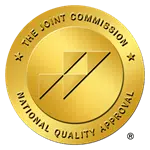Methamphetamines are powerful central nervous system stimulants that increase energy and alertness but carry a high potential for addiction and serious health risks, including heart problems, mental health issues, and overdose. The risk of abuse and addiction to methamphetamines is alarmingly high, leading to devastating physical, psychological, and social consequences for individuals and communities. Some users attempt to avoid detection in urine tests. This article summarizes te highlights.

Duration of Meth Detection in Urine
The detection window for methamphetamines in urine typically spans 3-5 days following consumption, offering a critical time frame for identifying recent use. This average detection period, however, is subject to variability based on several key factors. Notably, the frequency and dosage of methamphetamine use play significant roles in determining how long the substance remains detectable in an individual’s system. Regular or heavy users may find that methamphetamine is detectable for a longer duration due to the accumulation of the drug in their system, extending the detection window beyond the average range.
Additionally, individual physiological factors such as:
- Metabolism rate
- Body mass
- Age
- Hydration level
- Overall health
can influence how quickly methamphetamine is processed and eliminated from the body. For instance, a person with a faster metabolism may expel methamphetamine more rapidly than someone with a slower metabolic rate. The method of use—whether ingested, smoked, snorted, or injected—also affects the drug’s absorption rate and, consequently, its detection timeline in urine.
Understanding these factors is crucial for accurately interpreting urine test results for methamphetamine, acknowledging that detection windows can vary widely among individuals based on their unique physical condition and patterns of use.
Factors Affecting Meth Detection Time
Factors influencing methamphetamine detection times in drug tests extend beyond simple usage patterns, deeply entwined with individual physiological characteristics and behavioral factors.
Metabolism rate: Foremost among these is the individual’s metabolism rate, a crucial determinant in how quickly the body processes and eliminates substances like methamphetamine. Those with a faster metabolism may find the drug leaving their system more swiftly, whereas individuals with slower metabolic rates might experience prolonged detection times.
Hydration levels: These also significantly impact detection durations. A well-hydrated body can expedite the elimination of toxins and, consequently, might reduce the detectability window of methamphetamine in urine tests. However, excessive water intake close to the testing time can sometimes dilute urine samples, affecting the test’s accuracy.
Use level: Chronic or heavy use of methamphetamine invariably extends the drug’s detection period. Regular users accumulate higher concentrations of the drug in their body, which takes longer to diminish below detectable levels. This can significantly extend the detection window, making methamphetamine detectable for extended periods compared to occasional users.
Other factors: These include:
- Body mass
- Age
- Overall health
- The specific testing method employed.
For instance, older individuals or those with compromised liver or kidney function may process substances more slowly, thereby prolonging detection times. The interaction of these diverse factors makes the precise prediction of methamphetamine detection times complex, necessitating a holistic consideration of each individual’s unique physiological and behavioral profile.
Urine Drug Testing for Meth
Urine drug testing stands as a widely utilized method for detecting methamphetamine use, serving both clinical and forensic purposes. These tests identify the presence of methamphetamine and its metabolites in urine, offering a non-invasive means to monitor substance use. Given its relatively simple administration and the methamphetamine’s detectable presence in urine for 3 to 5 days post-use, this testing method is favored for its balance of convenience and efficacy.
Testing protocols establish specific cutoff levels to distinguish between positive and negative results. These cutoff levels are set to minimize the chance of false positives from incidental exposure to methamphetamine or the ingestion of substances containing similar compounds. However, the detection window—the period during which methamphetamine remains identifiable in urine—can vary based on individual factors such as metabolism, frequency of use, and dosage, as well as hydration levels.
Despite the general reliability of urine drug tests, the potential for false positives or false negatives exists. False positives may occur due to cross-reactivity with other substances or medications, whereas false negatives can result from sample dilution or the timing of the test relative to drug use.
Laboratories often confirm positive results with more sophisticated tests, like gas chromatography-mass spectrometry (GC-MS), to ensure accuracy. Awareness of these limitations is crucial for interpreting test outcomes, highlighting the importance of considering comprehensive clinical assessments alongside urine drug test results to accurately identify methamphetamine use.
Meth Recovery Support
Seeking professional help for methamphetamine abuse is a crucial step towards recovery, underscoring the importance of specialized support in overcoming addiction. Methamphetamine dependence is particularly challenging due to its highly addictive nature and the profound psychological and physical effects it can have on an individual.
Professional treatment facilities, such as The Encino Detox & Recovery Center, offer comprehensive recovery resources tailored to address the complexities of meth addiction. These resources include medical detoxification, individual and group therapy, relapse prevention strategies, and aftercare planning, all within a supportive and therapeutic environment.
The Encino provides a holistic approach to recovery, emphasizing personalized care plans to meet the unique needs of each client. Their team of healthcare professionals and addiction specialists is dedicated to assisting individuals through every stage of their recovery journey, offering both medical and emotional support.
Encouragement to reach out for help is a vital message for anyone struggling with methamphetamine abuse. Recovery is a challenging path, but with the right support and resources, it is entirely achievable. The Encino encourages individuals to take that first step towards a healthier, substance-free life by reaching out for assistance and guidance. The journey to recovery starts with acknowledging the need for help and seeking the support necessary to navigate the road ahead.

In Summary
Methamphetamine can be detected in urine for 3-5 days, but this varies based on usage patterns and individual physiology. For those facing addiction, it’s crucial to seek professional treatment. The Encino Detox & Recovery Center offers a comprehensive suite of resources to aid in recovery, emphasizing the importance of reaching out for support to navigate the path to a healthier, drug-free life. Reach out today.
Key Takeaways
- Meth can typically be detected in urine for up to 3-5 days.
- Factors such as frequency of use, dosage, and individual metabolism can influence detection time.
- Urine drug tests are commonly used to detect methamphetamine in urine samples.
- False positives or negatives may occur in urine drug testing due to various reasons.
- Seeking professional help and support is essential for those struggling with meth abuse.


















